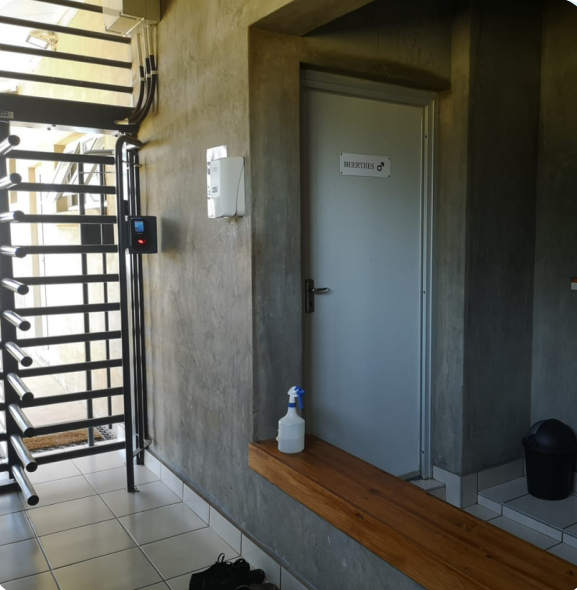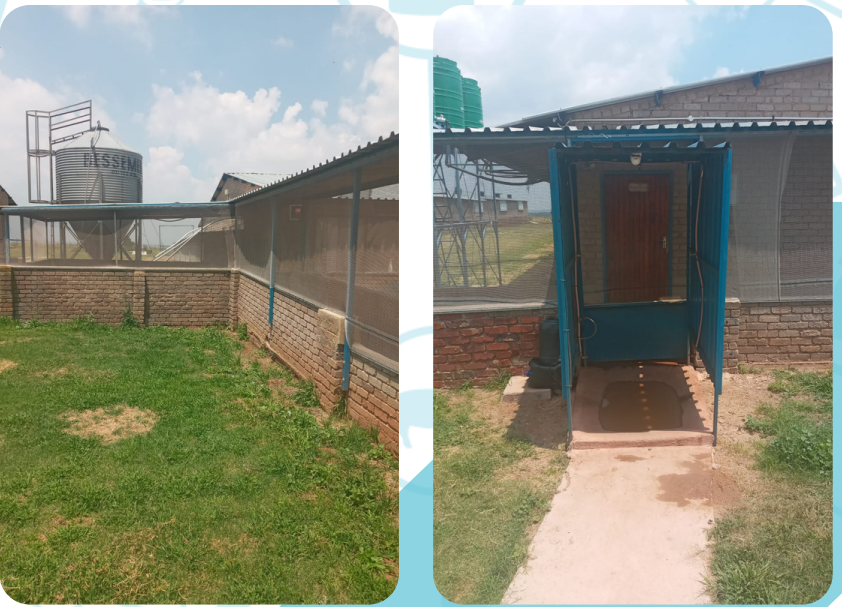

Time affects all of us. How we respond to the change makes us move, stay or
go away! This is also true for all sizes of operations within the pork industry.
In South Africa, the pork industry consists of an informal sector and a more
regulated commercial sector. Still, non-compulsory pig compartments found
in the commercial industry include the nucleus pig herds.
The sow population in South Africa stands at around 120,000 sows with an
average of 1,000 sows per production site. The number of marketable pigs
produced is estimated at fewer than 3 million pigs per year with
approximately 400 commercial producers and 19 stud breeders from the
latest census.
The informal sector’s number of pigs per location ranges from a single animal
upwards. The different sectors are not separated by herd size but rather the
aim and goals of the operation or keeping of pigs. The disease risk from the
informal sector is of concern to the commercial industry as the disease
affects indiscriminately. However, the preventative measures are not equal
across all sectors.
The pig operations that apply for pig compartment status with the Department of Agriculture, Forestry, and Fisheries National Veterinary Services do so for their own benefit or as a marketing requirement. The certified compartment status includes bi-annual inspection, serology testing, and unannounced audits. The pig compartment certification is not mandatory, but the benefits of such a program outweigh the risk on the producer and national level. Marketing is a crucial driver for these producers to be certified as abattoirs are selective about the origin of the animals produced for slaughter.
The standards for the registration are compiled in the Veterinary Procedural Notice (VPN) directive that also serves as measurable outcomes for production sites, Abattoirs, and Packing facilities. The VPN is formulated based on the Animal Disease Act and Meat Safety Act within South Africa. This veterinary-approved pig compartments’ primary objective is to establish a bio-secure facility, and reduce the risk of entry of exotic diseases affecting pigs.
The South African Pork Producers Organisation (SAPPO) also regulates the registered member commercial producers through a program called PORK360° quality assurance. SAPO actively works toward integrating the program’s production and quality assurance standards to the informal sector of pig farmers.
A pig compartment is a defined establishment/site surrounded by a physical barrier (fence) where a pig population is contained under a biosecurity management system with a distinct health status concerning specific diseases requiring surveillance and control measures to be applied.
you plan to visit a pig-approved compartment facility you will have to contact the relevant farm ahead of time. The farm’s management offices generally are not on the same premise as the production sites as a step towards regulating visitors and risk contact for farm management. This also serves as an opportunity, as the companies involved display a professional image as proud producers within the industry. The first step is to complete and
submit their visitor’s pre-authorization access form. Stating the reason for a visit is
equally important to being 72-hours pig free; this means no prior pig farm or pig
contact. If the visitor meets all the requirements, then an appointment can
be scheduled.

These guidelines are formulated in such a manner as to eliminate disease, starting from vehicles entering thru to people and animals moving across pre-determined barriers.


There is a secured entry into the facilities to control any unregulated
entering of people onto premises with an added process of bio-security
steps that need to be followed.


Arriving at the production site, the visitor will be granted access to the pre-clean area. This is a grey area, and modes of possible disease entry are systematically eliminated. Hand
sanitation is provided, followed by removing shoes while sitting on the divider, a bench, and swinging legs over, preventing debris from shoes being carried across. The responsible person for receiving visitors will provide a farm-access register that needs to be completed and signed. Instructions are given as to the showering in facilities and the necessary personal protective clothing and shoes in the clean area inside the farm. Workers use biometrics for their daily access to the workplace and follow the same steps.
It might sound complex, but bio-security should always be practical.


The risk mitigation on farms goes beyond a fence, and a shower, here an added layer for protecting against birds gaining access to the pig housing facilities is implemented. Entrants to the pig houses must access through a censored mister to further disinfect clothes and boots between the site offices, canteen, etc.


Inside the farm, there are frequent boot disinfection stations that are used
regularly when controlling internal bio-security. All the efforts are practical, but it does not replace: producer, worker, and visitor awareness along with the responsibility in keeping the protocol. The monetary loss in a disease outbreak justifies the cost of disease prevention measures, even for the small-scale pig farmer. Applying basic bio-security steps, no pig or pig-related contact can keep your pigs safe. Good animal health is the animal’s first line of defense. However, pathogens that cause disease moves in ways not always controllable, but by doing the basics, the risk is significantly reduced.





